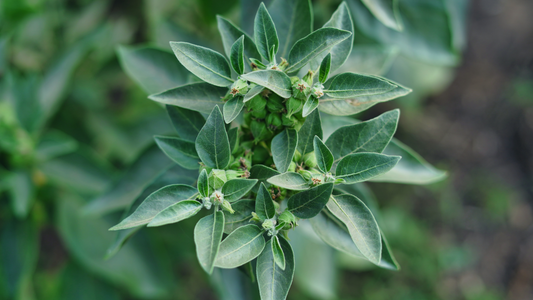- Blog
- Mumijo & Shilajit Origin - The black gold of the mountains

Mumijo & Shilajit Origin - The black gold of the mountains
Shilajit: The Mysterious Substance from the Mountains - Origin and History
Shilajit, also known as Mumijo, is one of the most fascinating natural substances in traditional medicine. This resinous mass naturally seeps from rock crevices in various mountain ranges and has been used by different cultures for thousands of years. The biological formation process spans several centuries and results in a mineral-rich substance with remarkable properties.
The geological formation of Shilajit
The formation of Shilajit is based on complex geological and biological processes. Plant biomass is decomposed over centuries by special microorganisms and compressed by the pressure of rock masses. Climatic conditions such as extreme temperature fluctuations and high humidity play a central role in this process. The decomposition mainly occurs at altitudes between 1000 and 5000 meters. Minerals from the surrounding rock further enrich the organic matter and give Shilajit its characteristic properties.
The scientific process of emergence
Biochemical analyses show that the formation of Shilajit goes through several phases. Initially, plant remains are decomposed by specific fungal cultures and bacteria. These microorganisms convert complex organic compounds into humic acids and fulvic acids. Rock and mineral erosion leads to the accumulation of over 80 different minerals and trace elements. Through constant pressure and changing temperatures, these components combine to form a unique matrix. Modern examination methods confirm the extraordinary molecular structure of this natural compound.
Traditional main extraction areas of Mumijo
The origin of Mumijo focuses on specific mountain regions of Asia. Particularly, the Himalayas, the Altai, and the Caucasus are traditional extraction areas. Geological peculiarities of these regions create optimal conditions for the formation of high-quality Shilajit. Local communities have been using their traditional knowledge for generations to identify productive deposits. The different climatic and geological conditions of the regions influence the composition and quality of the extracted material.
The Himalayan region as the most important source
The Himalayas are considered the most significant source of high-quality Shilajit. Particularly, the regions of Nepal, Bhutan, and Sikkim are known for their deposits. The extreme altitude, specific rock composition, and unique flora favor the formation of particularly high-quality variants. Traditional collectors know the most productive sites in hard-to-reach areas. The extraction usually takes place at altitudes between 3000 and 5000 meters. Characteristic of Himalayan Shilajit are the high mineral content and the balanced composition of the ingredients.
Other significant origin regions
In addition to the Himalayas, there are other significant regions of origin for Shilajit. The Altai Mountains also provide favorable conditions due to their geological characteristics. The Caucasus and the Hindu Kush are other traditional extraction areas with their own characteristic quality features. Regional differences in rock formation and vegetation shape the respective properties of the extracted material. The various altitudes and climatic conditions of these regions significantly influence the composition of Shilajit.
Quality differences by region of origin
The quality of Shilajit varies significantly depending on the region of origin. Geological factors such as rock type and mineral deposits influence the composition. Altitude and climatic conditions affect the maturation process. Traditional collectors assess quality based on specific characteristics such as color, consistency, and solubility. Modern analytical methods confirm these empirical experiences through detailed examinations of the biochemical composition.
Special features of Himalayan Shilajit
Himalayan Shilajit is characterized by special quality features. The unique combination of altitude, rock formation, and alpine vegetation creates optimal conditions for its formation. It is characterized by a high content of fulvic acids and a balanced mineral composition. The extreme altitude leads to a slow maturation process, allowing complex molecular structures to form. Traditional collectors particularly appreciate the uniform consistency and the typical dark brown to black coloration of Himalayan Shilajit.
Legal framework and import
Legal regulations govern the import and distribution of Shilajit. Different countries have established specific regulations. Quality standards and purity criteria must be adhered to. Certifications document compliance with legal requirements. International trade is subject to strict controls. Transparent supply chains ensure the traceability of the material.
Summary and Conclusion
The origin of Shilajit significantly shapes its special properties. Traditional extraction areas provide materials of different characteristics. Modern methods complement traditional knowledge with scientific insights. Sustainable use ensures the long-term availability of this special natural substance. The cultural significance in the countries of origin remains intact. Future developments will connect traditional values with modern standards.


